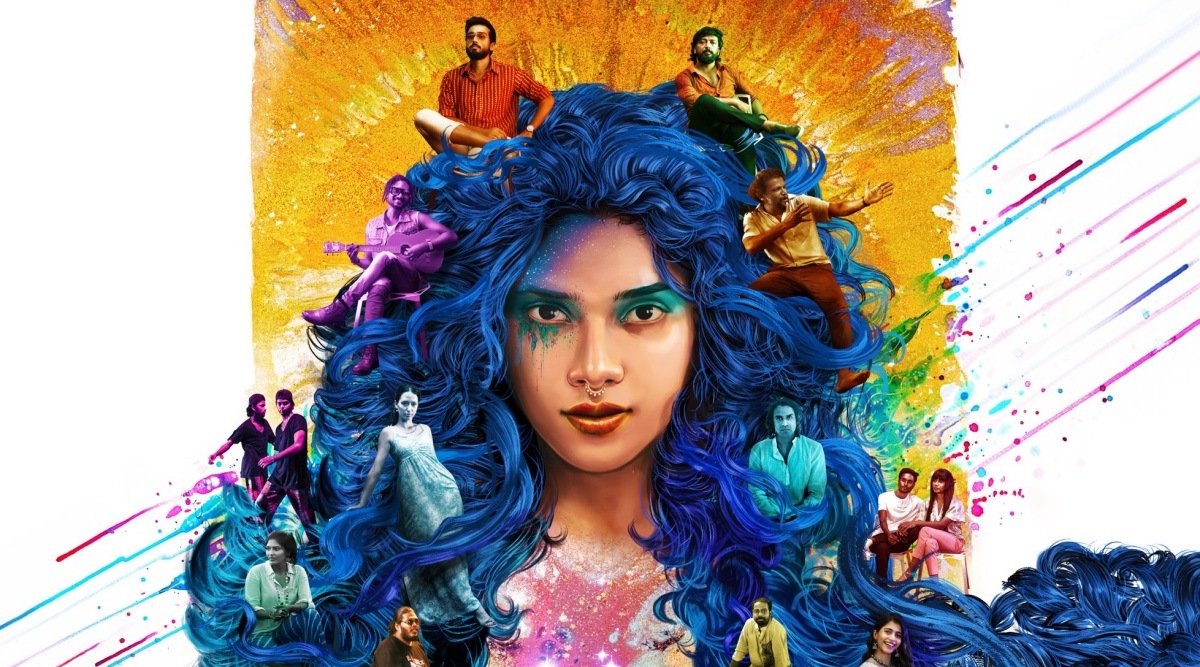 A poster of Natchathiram Nagargiradhu (2022). (Photo: pa.ranjith/ @beemji/ Twitter)
A poster of Natchathiram Nagargiradhu (2022). (Photo: pa.ranjith/ @beemji/ Twitter)Critical thinking on status and hierarchy are rarely subjects of popular cinema in India and the past decade has seen a revolution of sorts. We have come a long way from the Hindi movie Lagaan (2001). In this award-winning anti-colonial nationalist epic drama, the character of Kachara (garbage) had to be an “outcaste”. Films and film-making have long imbibed and reproduced the hierarchies and disgust towards marginal groups. Such ideas of hierarchy are not limited to waste and tend to govern our worldview — they obstruct our humanity, of the privileged castes more particularly.
While Kachara had to be an outcaste, can we imagine waste or waste bins being called after some high-status surname in India? Let’s assume we call waste bins/containers as Kulkarni, Banerjee or Subramanian, Thakur or Nilekani — seems very disturbing right? In France, waste bins and containers are called Poubelle. They came to be called so after Eugène Poubelle, a French lawyer and diplomat from a high-status family who introduced waste containers to Paris and made their use compulsory. How we are structured instead is to associate waste with low or outcastes and such thinking is not limited to waste alone.
Pa. Ranjith’s Natchathiram Nagargiradhu (Star is Moving) engages with several such prejudices – a hallmark of his work — this time, more concretely with the theme of contemporary love. In doing so, he reverses and shatters several hierarchies — gender, class, caste, beauty and colour, uprooting the individual and leaving them afloat freely without regressive roots. The plot revolves around an alternative theatre group that decides to work on the theme of love. They delve into the complex, particularist, suppressed and forced nature of love in India. Rene (Dushra), Arjun (Kalaiyarasan) and Iniyan (Kalidas Jayaram) are the main characters but every other actor in the group, including the antagonist (Shabeer Kallarakkal) who shows up in the very end, leaves a mark.
Rene plays a model and theatre actor who admires nature (stars), and lives a minimalist life — elegant and global, instead of branded clothes or shoes she flaunts her intellect, and asks occasionally, have you read this book? There is humility in her character and simultaneous arrogance of erudition and the struggles that made her stronger. She eats beef with no shame and offers it to others like any other meat-based food. She is a die-hard fan of Illaya Raja’s music, unlike Iniyan. By now we know Rene is not a jhola-wielding Gandhian artist and she is not a Marxist either. She calls herself an Ambedkarite and not surprisingly, the word Dalit is not used even once in the movie. Rene’s politics thus claims to be universal and transgresses given norms and rules for emancipation — her own and others.
Pa Ranjith uses signs, symbols, colours, characters and light cleverly to portray the irony of status dominance and also to celebrate subaltern protest. The theatre group uses the metaphor of the wild cat and the domesticated cat to unravel the irony of caste distinction, hierarchy and honour killings. Beyond the play, Rene and Iniyan are in love and while they fight, Iniyan is figuring out ways to become a casteless person. It is the character of Arjun that exposes the suppressed nature of our (caste-centred) humanity. He unlearns his toxic masculine prejudice about women, lower castes and trans groups and falls in one-sided love with Rene. The flow of emotions and normalised violence displayed when he visits his ailing grandmother and shares with his mother his love for a Scheduled Caste girl is both disturbing and ironic. His forced and rushed marriage to save the family honour is cancelled only when his dying grandmother refuses to let go of the taali (marriage thread), as she does not want Arjun’s life to be spoiled like hers.
The antagonist (Shabeer Kallarakkal) is a cool, fair and handsome looking well-built yoga enthusiast mostly dressed in white and even lives in a home with white walls and curtains (reminiscent of Kaala). He is monitoring the work of this group at the orders of his master. He calls himself a master cat who is out to defend our culture, rituals and traditions and smashes the theatre group violently.
Compassion, liberty and equality are the underlying themes in Natchathiram Nagargiradhu and the subaltern claim to emancipatory universals are at the heart of this movie. Buddha and the Buddhist ideal of compassion are a thread running throughout. It also celebrates the otherwise stigmatised subaltern worlds in several forms including poetry:
Me whose body wears the gentle smell of fresh meat/
My house stands showing its skeleton./
Make shift parai drum made with coconut shell and cow skin./
Youngsters who play them on the street./
To you we live in the far end of the village/
But to me the village begins with us./
Ambedkar in Castes in India: Their Mechanism, Genesis and Development (1916), observed that endogamy of caste was a fashion in the Hindu society that originated from the Brahmin caste and this fashion spread through the infection of imitation. Three Ambedkarite directors – Pa Ranjith, Neeraj Ghaywan and Nagraj Manjule — are changing this fashion. They have raised the bar radically and have continuously explored the cinematic imagination of caste, religion and nationalism. One only hopes this movement revolutionises Indian cinema further and being an Ambedkarite becomes fashionable too.
The writer is visiting scholar at CESDIP, Paris